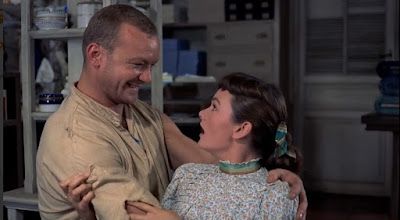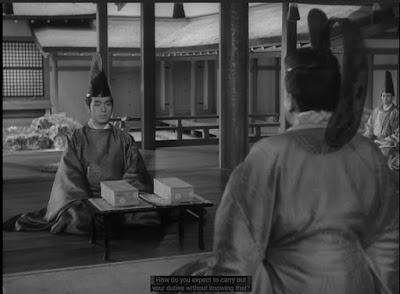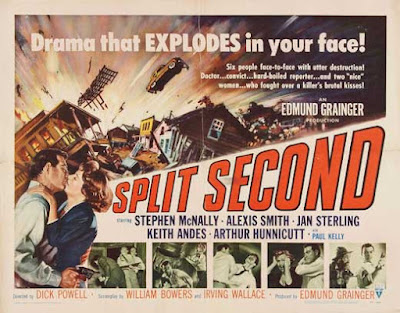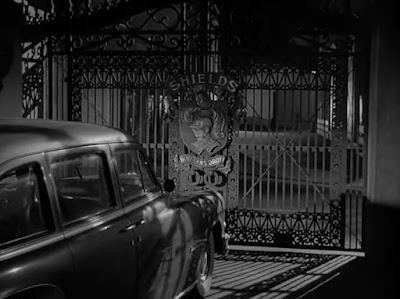"Que Será, Será"
The Man Who Knew Too Much, 1956
Director: Alfred Hitchcock
Writers: John Michael Hayes, based on a story by Charles Bennett and D. B. Wyndham-Lewis
Cinematographer: Robert Burks
Producer: Herbert Coleman and Alfred Hitchcock for Paramount Pictures, Inc.
Starring: James Stewart, Doris Day, Brenda de Banzie, Bernard Miles, Daniel Gélin,
Why I chose it
At first, I considered watching another Christmas-themed film, but when this Hitchcock popped up on a list of best films of 1956, it was an easy choice. Anytime I get to fill in a gap in an auteur's filmography, I go for it. This is the first, and will probably be the only, Hitchcock in this blog series. But you never know, so check back!
'No-spoiler' plot overview
Dr. Benjamin McKenna (James Stewart) and his former stage musical star wife, Jo, take a holiday in Marrakesh with their school-aged son, Hank (Christopher Olsen). It isn't long before they make the acquaintance of a mysterious Frenchman, Louis Bernard (Daniel Gélin), of whom Jo is instantly suspicious. When Bernard, disguised as a Moroccan, is knifed in a market in broad daylight, the fun begins. Before dying, he whispers something to McKenna about an imminent assassination of a political figure in London along with some disconnected details. McKenna and Jo decide to pick up the trail of this intrigue in London, made more urgent by not only the impending assassination but by the kidnapping of little Hank, who is being held for ransom to ensure that the 'man who knew too much' doesn't talk to the wrong people.
 |
| Jo and Ben McKenna (Day and Stewart) try to get details about their son's whereabouts. |
Production Background
Hitchcock had already filmed this story with the same name, during his British years (1934). The earlier version was a taut black-and-white suspense story (only 75 minutes long) with different settings and slightly different characters. In 1941, David O. Selznick bought the rights to the story and wanted Hitchcock to remake it for him, but Hitchcock was not inspired. It was only a decade and a half later that his inspiration came when he was vacationing with his wife in Morocco.
In his interview with François Truffaut, Hitchcock compared the two versions by saying that the first film was "the work of a talented amateur, and the second was made by a professional."
The only Oscar the film earned was for Best Music, Original Song, given to Jay Livingston and Ray Evans for "Que Será, Será", which became Doris Day's signature song.
Some other notable film-related events in 1956 (from Filmsite.org):
- The elegant Grace Kelly, "Hollywood's Fairy Tale Princess," married Prince Rainier III of Monaco on April 18, 1956. Kelly met Prince Rainier III while attending the Cannes Film Festival, and during the making of her third film for Alfred Hitchcock (as his icy cool blonde) - To Catch a Thief (1955).
- Legendary producer/director Cecil B. DeMille remade his own 1923 silent epic, The Ten Commandments (1956) -- it was his last film, and his first and sole widescreen feature film.
- Producer Michael Todd's and director Michael Anderson's Best Picture-winning Around the World in 80 Days (1956) was notable for its all-star casting -- with dozens of credited cameo roles for its many stars. The term "cameo appearance" was popularized by this film.
- The Wizard of Oz (1939) was first televised (on CBS-TV) on November 3rd, 1956 -- an event that would become an annual holiday season event for many decades. It was the first feature-length film broadcast on a major TV network in its original, uncut form.
- I've decided that James Stewart's superpower was playing not just the everyman, but the super-cranky everyman. And I do mean super cranky. After years of perfecting this persona, he's at it again in this film, whether it's in scenes in which he bickers with his wife or when, unprovoked, comes to fisticuffs with a group of taxidermists (!). Even in It's a Wonderful Life, and The Shop Around the Corner, where his characters have a right to be cranky, he'll never be accused of underplaying, and I find it annoying. I recall early in the history of this blog I reviewed Destry Rides Again, and found it to contain my favorite Stewart performance because he struck a perfect balance between reluctant hero and cynic.
James Stewart with his "I'm really cranky right now" look. - Even though the film was a bit long at 120 minutes, Hitchcock didn't waste any time getting the action started, putting our heroes in the middle of Marrakesh. The brightly colored Technicolor camera work combined with the on-location locales made for a sumptuous and sometimes exotic visual banquet. It was just a good way to spend a couple of hours on a rainy day.
On a bus in Marrakesh. In London. - For those looking for typical Hitchcock suspense, his subjective camera, or even his black humor, it's all here. I was reminded of why Hitchcock has the reputation he has.
The composition of this shot gives me the chills. McKenna doesn't yet realize he's about to do battle with a
stuffed tiger here. - One of my favorite podcasts, the somewhat irreverent 'Classic Film Jerks', has a regular segment called "So Old", in which they point out to hilarious effect all the outdated elements of the particular film they're reviewing. The Man Who Knew Too Much had many of these elements. For starters, how about leaving your young son in the care of strangers you'd just met over dinner the night before, and in a foreign country? And despite the cleverness of spunky Jo McKenna, the marital dynamics here were distinctly of their time, with her promising career truncated so she could be a wife.
The McKennas meet the Draytons (Bernard Miles,
Brenda de Banzie) at dinner. - It's a great song, but the contrast between "Que Será, Será" and the Storm Cloud Symphony as performed by the London Symphony Orchestra at the Royal Albert Hall may induce a bit of cultural whiplash.
 |
| The London Symphony Orchestra and Chorus at Royal Albert Hall. |
- For this week's edition of 'Bit Player Bingo," I present the one and only film appearance of renowned composer Bernard Herrmann, Hitchcock's frequent collaborator, and Carolyn Jones, who went on to greater fame as Morticia in the original Addam's Family TV series
 |
| Bernard Herrmann conducts. |
 |
| Carolyn Jones (red dress) with other friends of the McKennas. |
The film is available on many streaming services to be rented for a small fee. It's on several DVDs/Blu-Ray that can be purchased or borrowed from your local library.
Further Reading
As always, TCM details more about the film's production in their article here.

















































